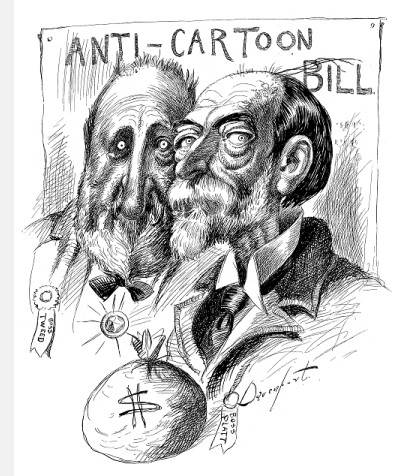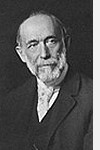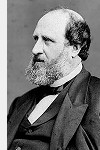No Honest Man Need Fear Cartoons
Legislating Cartoon Content

 After the public success of Davenport's "Dollar Mark" Hanna cartoons, it is alledged that U.S. Senator and N.Y. state republican boss Thomas C. Platt, (left) strong-armed the New York State Assemby to draft a bill that would effectively ban certain types of political cartoons--like those drawn by Davenport. Platt, (shown here with beady eyes in front of former Tammany Boss William Tweed) knew full well the power of the cartoon. This is the reason Davenport has him in the same context as Boss Bill Tweed.
After the public success of Davenport's "Dollar Mark" Hanna cartoons, it is alledged that U.S. Senator and N.Y. state republican boss Thomas C. Platt, (left) strong-armed the New York State Assemby to draft a bill that would effectively ban certain types of political cartoons--like those drawn by Davenport. Platt, (shown here with beady eyes in front of former Tammany Boss William Tweed) knew full well the power of the cartoon. This is the reason Davenport has him in the same context as Boss Bill Tweed.
 William Marcy Tweed (right, 1823-1878) was a chairmaker who used his popularity as a volunteer fireman to advance himself. He became an New York City alderman in 1851 and he built his power through the election and appointment of his friends. Tweed and his cronies became known as the Tweed Ring. Tweed's political machine gained numerous offices in New York City, and even to the state legislature and judges' seats, often through illegal means. From 1860-1870, Tweed controlled all Democratic Party nominations for the city and the state.
William Marcy Tweed (right, 1823-1878) was a chairmaker who used his popularity as a volunteer fireman to advance himself. He became an New York City alderman in 1851 and he built his power through the election and appointment of his friends. Tweed and his cronies became known as the Tweed Ring. Tweed's political machine gained numerous offices in New York City, and even to the state legislature and judges' seats, often through illegal means. From 1860-1870, Tweed controlled all Democratic Party nominations for the city and the state.
Tweed himself was elected to the United States House of Representatives in 1852, the New York City Board of Advisors in 1856, and the New York State Senate in 1867. In 1870, Tweed secured the passage of a city charter putting the control of the city into the hands of the Tammany-picked city adminstration. He then set about to plunder the city. The total amount of money stolen was never known, but was estimated at between $30 and $200 million.
Dissatisfied with the amount he received, one of Tweed's cronies gave The New York Times evidence that conclusively proved Tweed's involvement. In a subsequent interview, Tweed's only reply was, "What are you going to do about it?" However, political cartoons drawn by Thomas Nast resulted in the election of numerous opposition candidates in 1871. Tweed is attributed with exclaiming, "Stop them damned pictures. I don't care so much what the papers say about me. My constituents can't read. But, damn it, they can see pictures!"
After his subsiquent arrest, trials, re-arrest and a prison sentence, Tweed escaped and fled to Spain via Cuba, where he worked as a seaman on a Spanish ship. He was purportedly recognized from one of Nast's cartoons, and was extradited to New York, where he died in debtor's prison in 1878.

